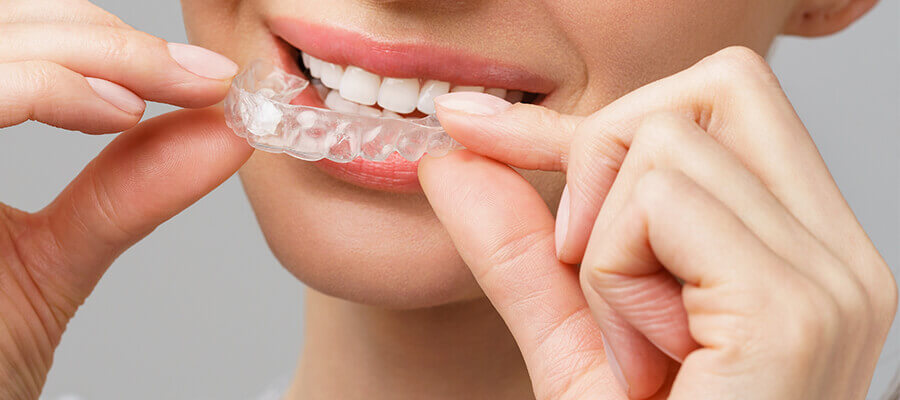White teeth are essential for a healthy and confident smile. Fortunately, there are several safe and effective solutions for teeth whitening, but it is important to be aware of the dangers of non-professional teeth whitening procedures.

What causes our teeth to lose their whiteness?
Both internal and external factors contribute to tooth discoloration. It is worthwhile to identify these causes individually, preferably with the help of a dentist, in order to find the appropriate teeth whitening method. While most methods primarily target external discoloration, it can be generally stated that professional teeth whitening performed in a dental office is significantly safer and more effective than home alternatives.
Certain foods and drinks can cause external discoloration. These include sodas, coffee, tea, alcohol, citrus fruits, and sweets. Due to their sugar or acid content, they can harm the tooth enamel, which is the outer white layer of the teeth.

Smoking is also an external factor that causes tooth discoloration. Nicotine and other harmful substances found in cigarettes and tobacco products leave stains on the tooth enamel. Smoking is not only a risk factor for tooth discoloration in dentistry, but it can also cause gum disease due to its negative effects on blood circulation, which can eventually lead to tooth loss.
Internal discolorations are usually caused by genetic factors. Some people have naturally strong and white tooth enamel due to inherited factors, while others have thinner enamel, which may appear grayer optically.
Regardless of genetic factors, it is a fact that tooth enamel can thin and become damaged over time. Tooth decay and various oral injuries can also cause internal tooth discoloration.

Safe teeth whitening
Commercially available teeth whitening products that have been tested are generally safe. Toothpaste and mouthwashes can also have these properties, but there are specific products and tools designed specifically for teeth whitening. Teeth whitening creams, gels, strips, and patches work on a similar principle: they need to be applied to the teeth for a specific period of time and may be effective in removing surface stains, with varying degrees of success. Devices generally use UV light and/or surfactants to reduce existing discolorations. However, improper or excessive use can damage the teeth, leading to tooth sensitivity, tooth decay, and gum irritation.

In contrast, professional dental whitening is a professional chemical procedure that can permanently lighten the tooth structure without causing damage. The use of peroxide-containing compounds is the basis for all professional whitening methods, which requires expertise and careful application.

The results of professional teeth whitening
The outcome of a whitening treatment performed in a dental office is usually a significantly brighter shade of teeth, although it depends on various factors, and the achieved shade can vary. Biological factors such as tooth composition, fluoride content, as well as innate or acquired dental structural defects play a role. The aforementioned lifestyle choices, such as food selection or smoking, also influence the results. Therefore, smokers, red wine or coffee consumers are advised to avoid these harmful habits during the whitening treatment. Fortunately, it is very rare for teeth whitening to not yield favourable results.
